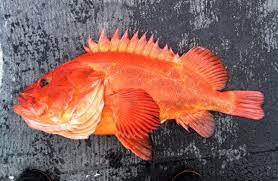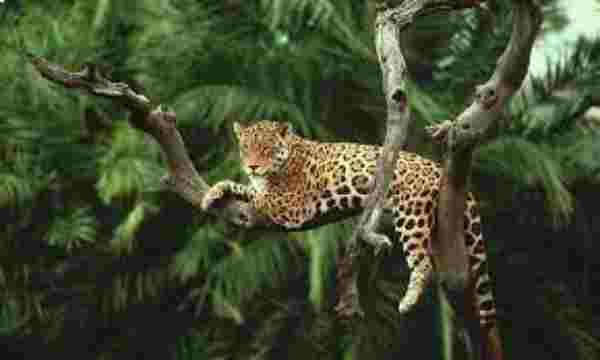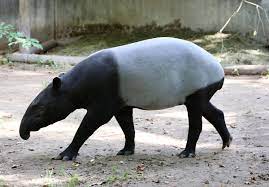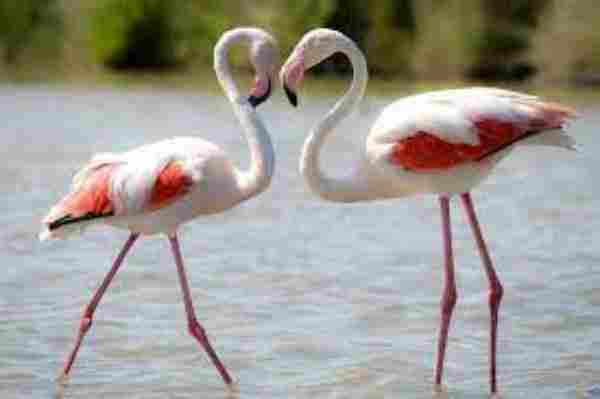Tulum, a picturesque coastal town nestled along Mexico’s Riviera Maya, has long been celebrated for its azure waters, ancient ruins, and bohemian charm. But beyond its postcard-perfect beaches and historic Mayan relics lies a natural paradise brimming with captivating wildlife. From the lush jungles to the crystal-clear cenotes, Tulum offers a sanctuary for an astonishing array of animals that often remain concealed from the casual tourist’s eye.
In this article, we embark on a journey into the heart of Animals in Tulum rich biodiversity, uncovering the untold stories of its resident creatures. From the elusive jaguars and vibrant toucans that call the Sian Ka’an Biosphere Reserve home to the mesmerizing marine life that thrives in its pristine Caribbean waters, we’ll introduce you to the fascinating creatures that coexist with Tulum’s vibrant culture and thriving tourism industry.
Prepare to be enchanted by the ethereal world of Animals in Tulum, where the wonders of nature flourish alongside the allure of this coastal gem.

Brief Overview of Tulum Natural Beauty and Diverse Ecosystems:
Nestled on the Yucatan Peninsula, Tulum boasts an enchanting blend of natural beauty and diverse ecosystems that make it a truly unique destination. This coastal town is renowned for its postcard-worthy beaches that kiss the crystal-clear waters of the Caribbean Sea.
Beyond the shoreline, Tulum’s landscapes transform into lush jungles and ancient Mayan ruins, providing a haven for an astonishing variety of wildlife. This article delves deep into the various facets of Tulum’s ecosystems, from its coastal paradises to the thriving jungles, exploring how its biodiversity is intertwined with its rich history and culture. Join us on a journey through Tulum’s hidden treasures, where the beauty of nature merges seamlessly with the allure of a coastal paradise.
Tulum’s Diverse Ecosystems:
A. Coastal Paradise:
Tulum’s coastline is a true testament to nature’s artistry. Its pristine, white-sand beaches and turquoise waters create a paradise for both visitors and the creatures that inhabit the underwater world. Coral reefs, home to an array of marine life, hug the coast, making it a hotspot for snorkelers and divers. From vibrant corals to playful dolphins, the coastal waters of Tulum are a testament to the town’s commitment to preserving its natural splendor.

B. Lush Jungles: The Rich Biodiversity of Tulum’s Forests:
Tulum’s jungles are a lush tapestry of life, teeming with biodiversity. These forests are inhabited by a captivating mix of wildlife, including spider monkeys, jaguars, and colorful toucans.
As you venture deeper into the heart of Tulum’s jungles, you’ll discover cenotes, underground rivers, and hidden caves that are not only breathtaking but also vital to the region’s delicate ecosystem. The symbiotic relationship between the flora and fauna of these jungles is a testament to the resilience of nature and the need for conservation efforts in this rapidly developing region.
The Ancient Guardians: Tulum’s Mayan Connection:
Tulum’s ecological significance is intricately tied to its rich Mayan heritage. The ancient ruins that dot the landscape serve as guardians of the environment, demonstrating how human history can coexist harmoniously with nature. These archaeological wonders, perched on cliffs overlooking the sea, offer a glimpse into the past and a stark reminder of the importance of preserving the natural world. The Mayan culture’s reverence for the environment continues to inspire conservation efforts in the region, fostering a sense of responsibility among both locals and visitors.
Sea Turtles:

Tulum’s pristine coastline serves as a crucial nesting ground for endangered sea turtles, including loggerheads, green turtles, and hawksbills. These ancient mariners return year after year to lay their eggs in the soft sands, connecting the town’s history with its future. Conservation efforts in Tulum are dedicated to protecting these majestic creatures and their hatchlings. Visitors can witness the awe-inspiring sight of baby turtles making their first journey to the sea, underscoring the importance of sustainable tourism in preserving this vital part of Tulum’s wildlife heritage.
Rays:

Beneath the Caribbean’s azure waters, rays glide gracefully, captivating divers and snorkelers with their serene elegance. In Tulum, encounters with spotted eagle rays and manta rays are not uncommon. These gentle giants are essential to the region’s marine ecosystem, balancing the delicate harmony of life beneath the waves. Understanding the ecological significance of rays is an integral part of responsible tourism in Tulum, as it highlights the interconnectedness of all marine life and emphasizes the need for preservation.
Colorful Fish:

Tulum’s vibrant coral reefs are alive with a dazzling array of colorful fish. Parrotfish, angelfish, and butterflyfish are just a few of the species that call these reefs home. Snorkelers and divers are treated to a vivid spectacle of colors and shapes, making it a must-see for nature enthusiasts. Tulum’s commitment to marine conservation ensures that these underwater wonders continue to thrive. Sustainable tourism practices and protected marine areas enable visitors to witness the mesmerizing diversity of colorful fish while contributing to the long-term health of Tulum’s underwater ecosystems.
Howler Monkeys:

Tulum’s lush jungles are enlivened by the echoing calls of howler monkeys, the spirited acrobats of the treetops. These charismatic creatures are a symbol of the region’s thriving biodiversity. As one explores the jungle trails, the opportunity to encounter these playful primates amidst the dense foliage is a testament to the coexistence of nature and civilization. Tulum’s conservation initiatives recognize the importance of preserving the habitats that sustain howler monkeys and other jungle inhabitants, ensuring that future generations can continue to enjoy these awe-inspiring encounters.
Jaguars:

Deep within Tulum’s wilderness, the enigmatic jaguar, the apex predator of the jungles, prowls with an air of mystery. Their elusive nature and intrinsic connection to Mayan culture make them symbolic guardians of Tulum’s natural heritage. Conservation efforts focus on protecting these big cats and their habitats, as they play a vital role in maintaining the ecological balance of the region. Responsible ecotourism allows lucky visitors to glimpse the jaguar’s tracks, fostering a deeper appreciation for the untamed beauty of Tulum’s jungles.
Tapirs:

The humble tapir, a gentle giant of Tulum’s forests, often goes unnoticed but plays a significant role in the ecosystem. As seed dispersers, they contribute to the regeneration of the jungle, ensuring its long-term health. Tulum’s commitment to preserving its lush landscapes includes safeguarding tapir habitats. With patience and respect for their natural behaviors, eco-conscious travelers may have the privilege of observing these elusive herbivores, solidifying the vital connection between Tulum’s jungles and its remarkable biodiversity.
Toucans:

Tropical splendor is incomplete without the vibrant presence of toucans, and Tulum’s jungles are home to these emblematic birds. Their striking plumage and distinct calls add a touch of enchantment to the region’s forests. Tulum’s conservation initiatives prioritize protecting the habitats of these charismatic avian inhabitants, ensuring that their colorful presence continues to grace the canopies. Birdwatchers and nature lovers alike can revel in the opportunity to spot toucans in their natural habitat, a testament to Tulum’s commitment to preserving its avian treasures.
Flamingos:

Tulum’s coastal lagoons and wetlands are adorned with the graceful presence of flamingos, casting a rosy hue over the serene waters. These striking birds are not only a visual spectacle but also essential to the local ecosystem. Tulum’s conservationists work diligently to protect the fragile habitats that flamingos depend on. Observing flocks of these elegant birds in their natural environment is a reminder of the delicate balance that sustains the region’s diverse wildlife.
Parrots:

The jungles and mangroves of Tulum resound with the raucous chatter of parrots, their colorful plumage adding a vivid palette to the natural tapestry. Conservation efforts in Tulum extend to these vibrant birds, as their survival depends on the preservation of their habitats. Birdwatchers are treated to the spectacle of parrot flocks in flight, a testament to Tulum’s commitment to nurturing its avian wonders and the rich biodiversity that thrives within its borders.
Conservation Efforts and Challenges:
Preserving Tulum’s natural beauty and diverse ecosystems is not without its challenges. Rapid urbanization, climate change, and illegal wildlife trade pose significant threats to the delicate balance that sustains this paradise. Nonetheless, passionate conservationists and local authorities are taking proactive steps to safeguard Tulum’s environment. Initiatives include reforestation projects, sustainable tourism practices, and marine conservation efforts, all aimed at preserving the unique ecosystems that make Tulum a global gem.
Responsible Tourism and Wildlife Encounters:
Responsible tourism plays a pivotal role in Tulum’s conservation efforts. Visitors are increasingly educated about the importance of respecting local ecosystems and wildlife. Eco-friendly accommodations, wildlife sanctuaries, and guided tours provide opportunities for travelers to appreciate Tulum’s natural beauty without causing harm. The goal is to foster an ethos of responsible travel, where encounters with animals are both ethical and educational, ensuring that Tulum’s wildlife thrives for generations to come.
Future Outlook for Tulum’s Wildlife:
The future of Tulum’s wildlife hinges on the collective efforts of conservationists, locals, and responsible tourists. While challenges persist, there is hope on the horizon. With continued dedication to preservation and sustainable development, Tulum’s ecosystems can flourish. The region’s unique blend of natural beauty, cultural heritage, and biodiversity can serve as a model for responsible coexistence between humans and nature in an increasingly interconnected world.
Final Words:
In Tulum, nature’s grandeur and cultural history converge, creating a paradise worth cherishing. The coastal paradises, lush jungles, and Mayan guardians all contribute to the town’s allure. Tulum’s journey toward sustainable tourism and conservation is a testament to the power of community and collective responsibility. As we conclude our exploration of Tulum’s ecosystems and wildlife, we find that this enchanting destination serves as a reminder of the delicate balance between human progress and environmental preservation, offering hope for a future where both can thrive harmoniously.
Reference:
- https://www.prodiveinternational.com/cenotes-a-lifeless-space/
- https://www.tripadvisor.com/ShowTopic-g150813-i155-k7802182-Snakes_in_Tulum-Tulum_Yucatan_Peninsula.html

Rahul M Suresh
Visiting the Zoo can be an exciting and educational experience for all involved. As a guide, I have the privilege of helping students and visitors alike to appreciate these animals in their natural habitat as well as introducing them to the various aspects of zoo life. I provide detailed information about the individual animals and their habitats, giving visitors an opportunity to understand each one more fully and appreciate them in a more intimate way.









